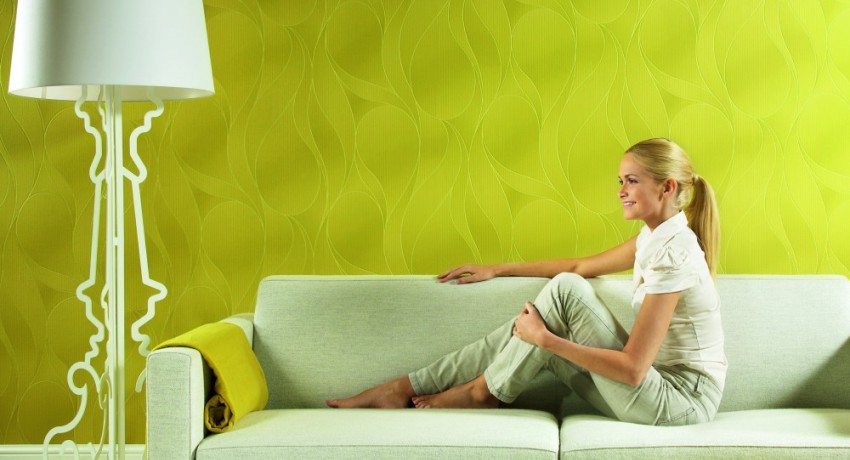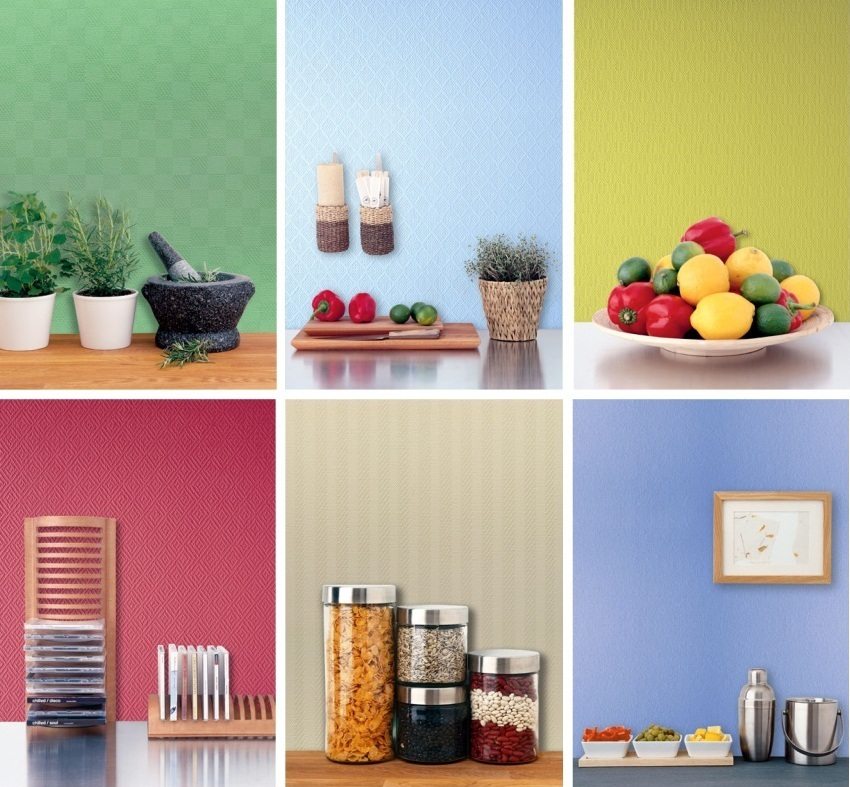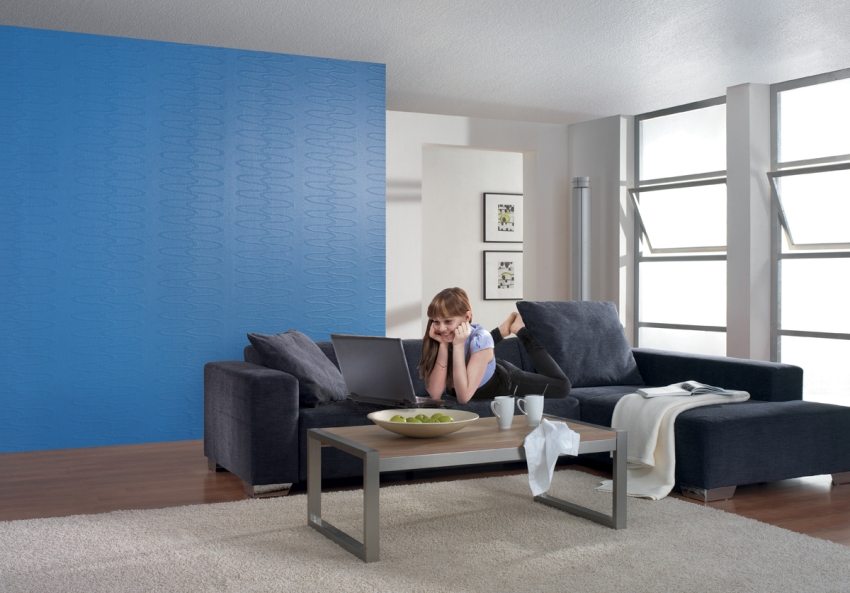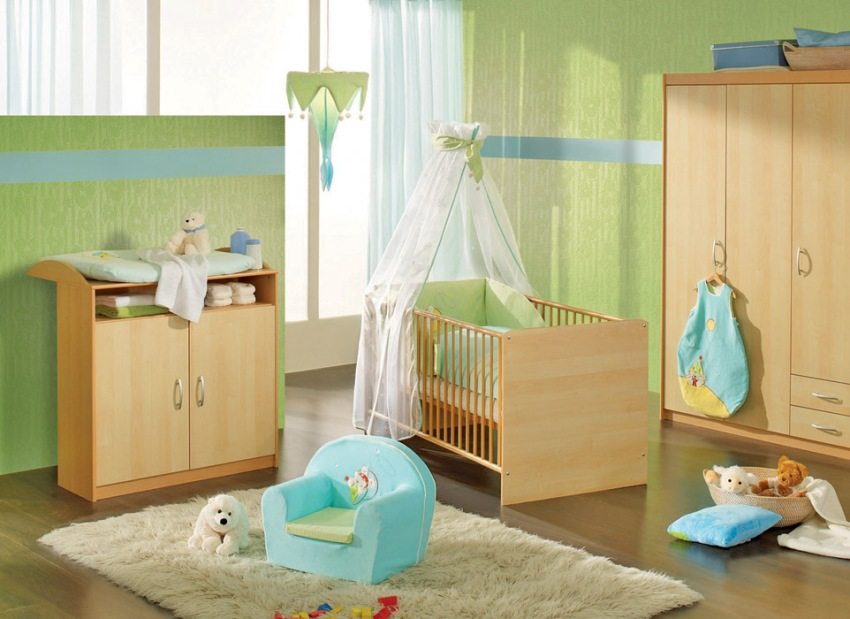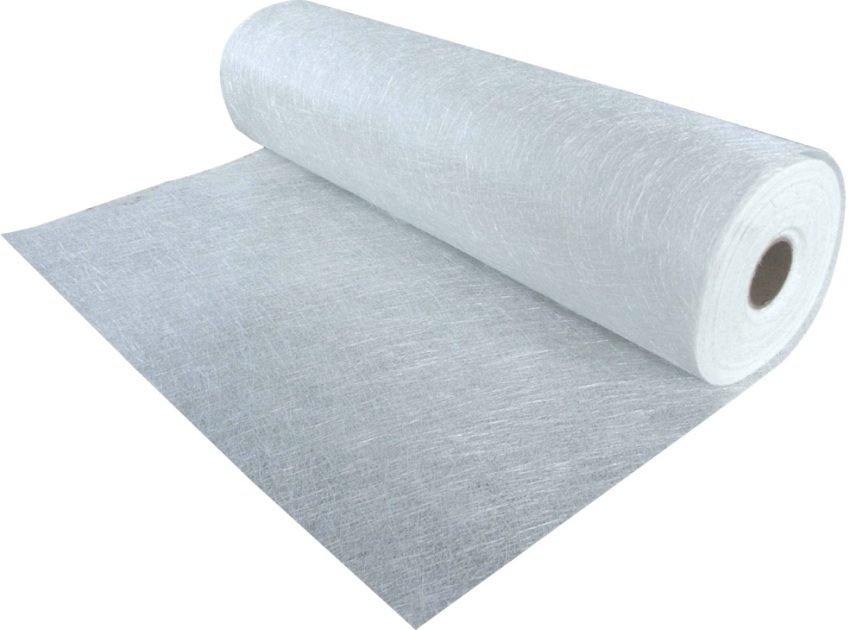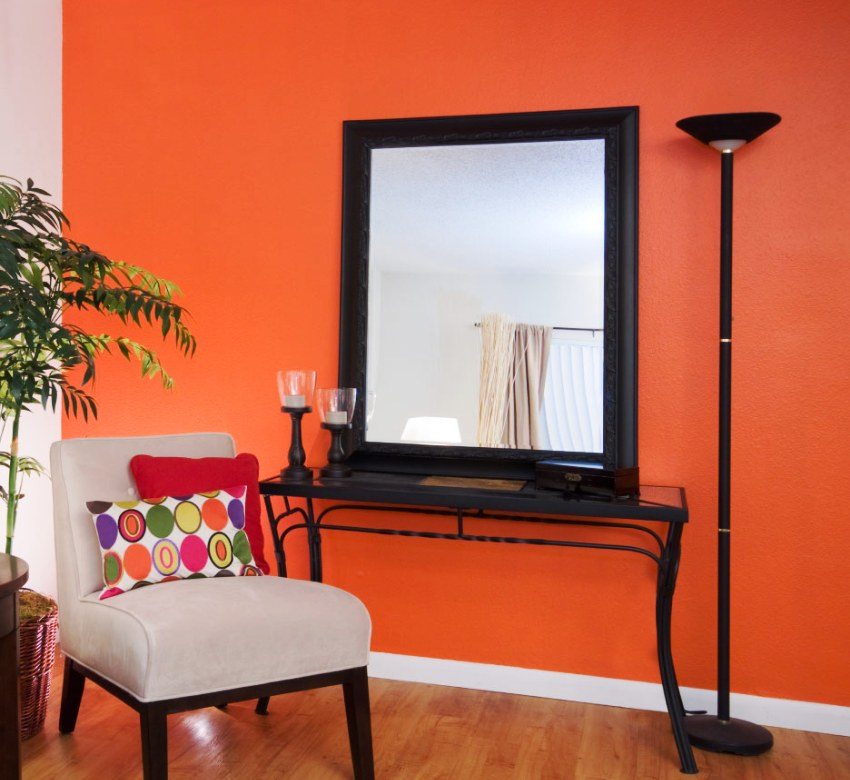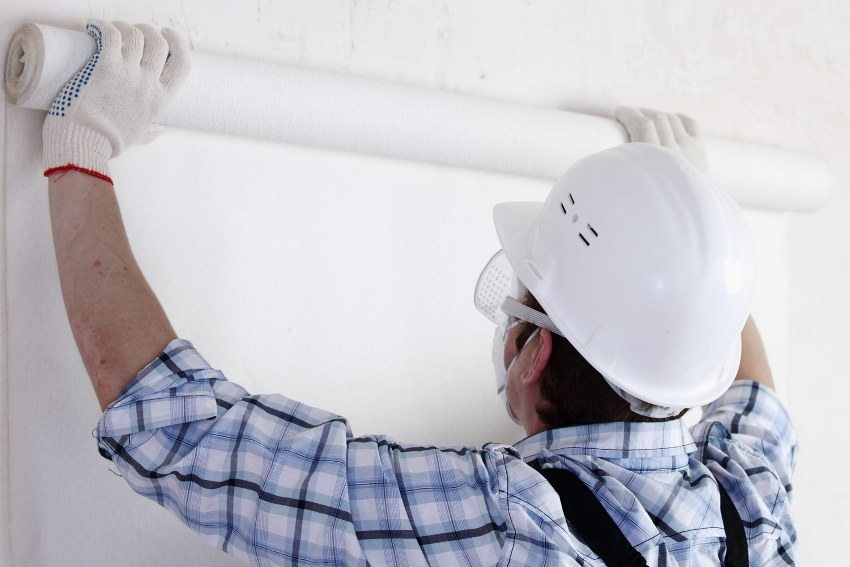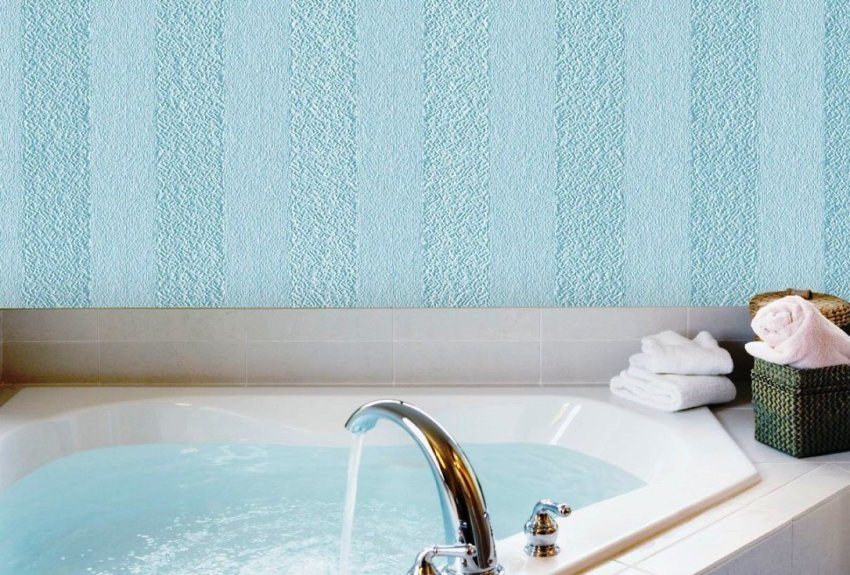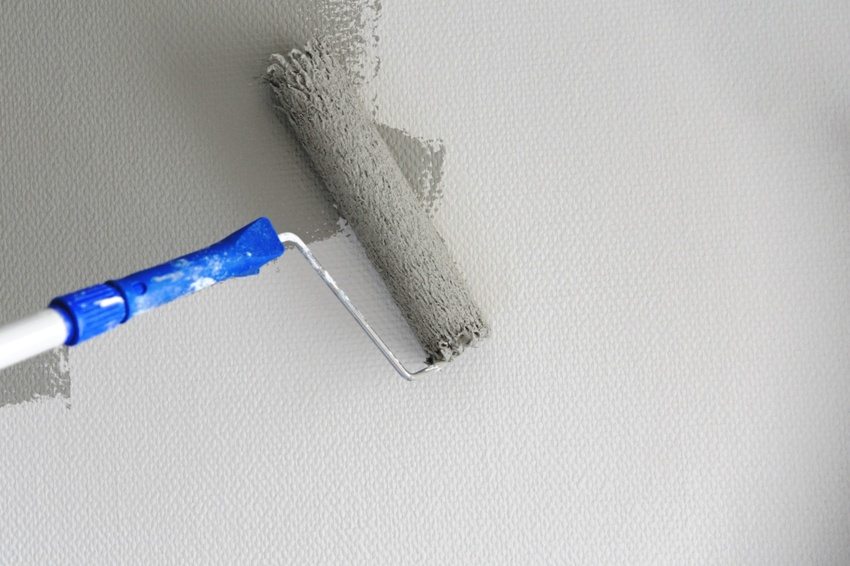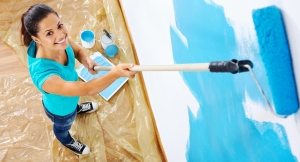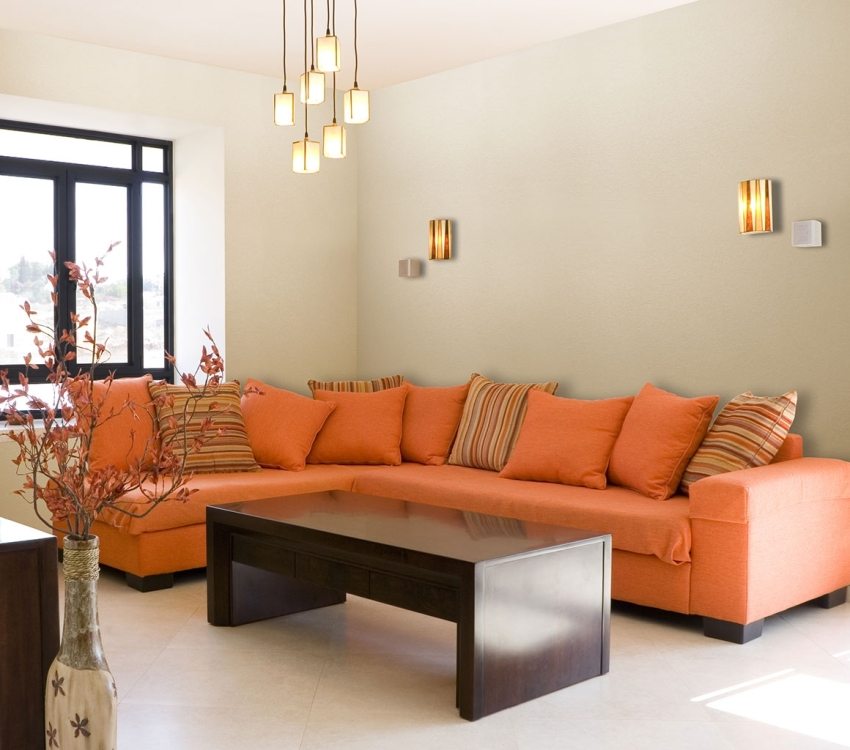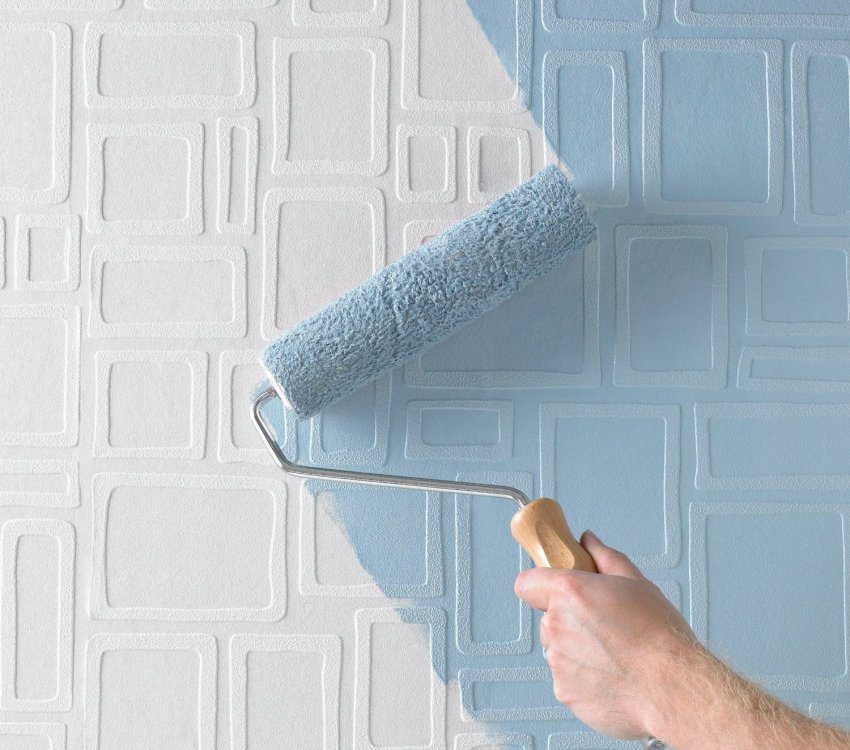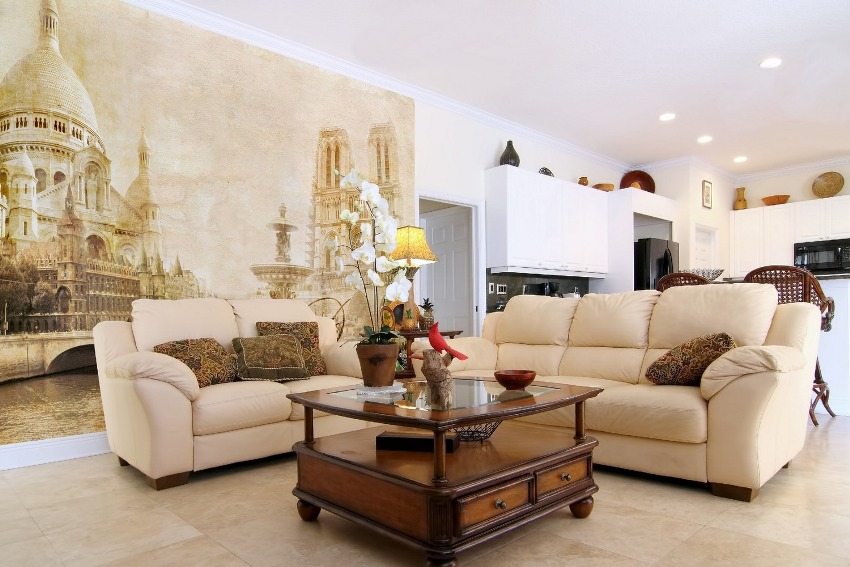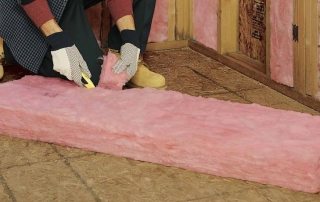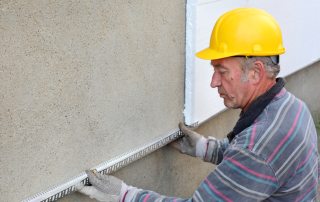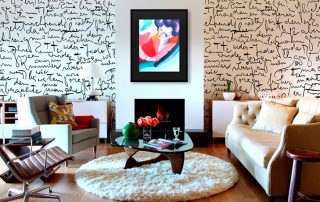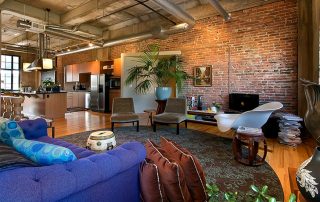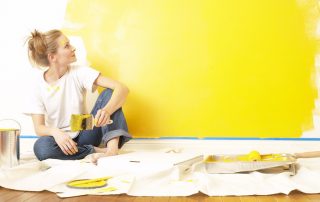When carrying out repairs and interior decoration inside the home, many prefer to use more standard solutions, choosing traditional approaches. However, many people keep up with modern technology. The building materials market presents a huge range of both classic and more innovative products. The latter include paintable glass wallpaper. The photo in the interior of this type of finish always surprises with its novelty and originality.
Content [Hide]
- 1 Raw materials and method of manufacturing fiberglass
- 2 Basic qualities and properties
- 3 Glass fiber variants: cobweb fiberglass and classic fiberglass
- 4 Gluing fiberglass: important points
- 5 Basic principles of painting glass fiber
- 6 Glass fiber for painting. Photos in the interior, beautiful solutions
Raw materials and method of manufacturing fiberglass
There are a lot of reviews about fiberglass. As is often the case, they are controversial. Before judging their veracity, you just need to figure out what glass wallpaper is. The name of this decorative coating often confuses the average buyer. It should be noted that it does not contain any chemical additives, and it is made exclusively from environmentally friendly natural materials: quartz sand, limestone, dolomite and soda. Glass briquettes are first formed from these components. Next, the briquettes are heated and drawn into threads. It is from such glass threads that woven fabric is made. At the end of the process, the resulting fabric is impregnated with a special compound. From such yarn can be woven the usual smooth cloth "cobweb" and glass wallpaper with textured, more embossed pattern. All of them are used only for painting.
Today fiberglass is mainly produced by European manufacturers. Undoubtedly, this is proof of their good quality. Everyone knows the fact that European quality standards are very high, which ensures good product characteristics. The interior with the use of this type of finish will have its own zest. The impression of completeness of the design solution and the predominance of one style will be created.
Basic qualities and properties
The technical characteristics of fiberglass are based on the characteristics of the material itself from which they are made:
- Environmental friendliness. Making products exclusively from natural materials has a great advantage over making similar products from chemicals.
- Breathable material. Their structure allows for high air permeability, which prevents excess moisture from accumulating. Accordingly, mold and mildew do not appear on the walls.
- They do not accumulate electricity, since glass is a non-static material by its physical properties. Therefore, they do not attract dust. This quality makes it very easy to clean the room and always provides an attractive look in the interior.
- The strength of such a finishing material is very high. Glass fiber has high reinforcing properties. They will not tear or scratch. Consequently, practicality is evident - pets, a baby carriage or a bicycle, not very careful attitude is not able to spoil them.
- Fire safety. Since glass melts at a temperature of 1300 ° C, glass wallpaper cannot cause a fire. Even when burning, they will not emit harmful substances.
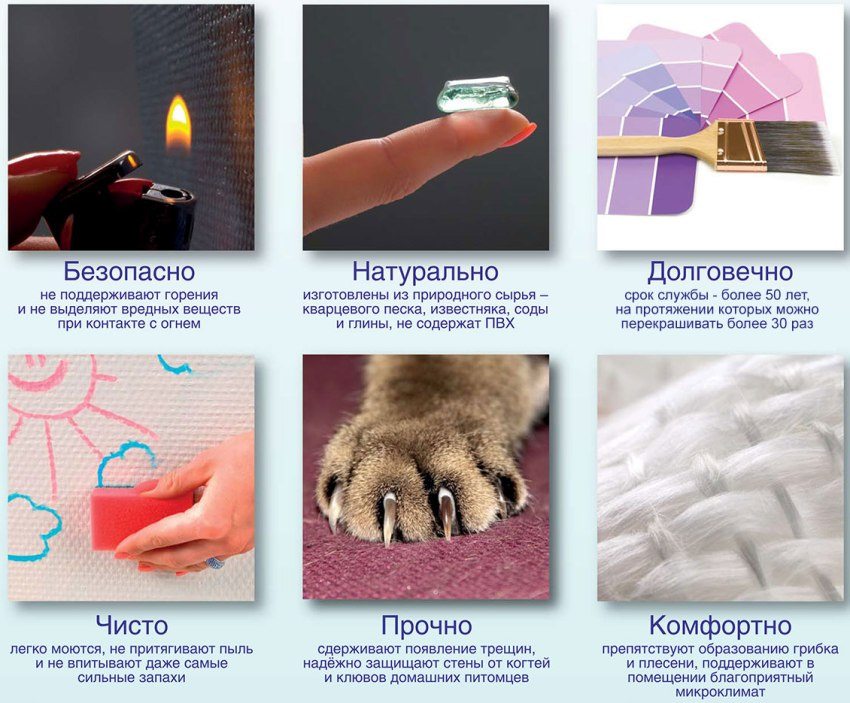
Among the advantages of fiberglass are environmental friendliness, safety, long service life, strength and aesthetic appeal
All of the above specifications are very important. And, despite the fact that fiberglass is an expensive option, the consumer will always win.
Interesting! The durability and practicality of the coating is ensured by the fact that glass wallpaper can be painted up to 20 times. It should be noted that the service life of fiberglass is up to 30 years.
Glass fiber variants: cobweb fiberglass and classic fiberglass
The name of cullet "spider line" comes from their external resemblance to an ordinary spider web. This material has all the technical characteristics inherent in fiberglass. The difference between such a painting canvas from the classical options is that it has a completely smooth surface and lower density. Reviews about him and a photo of a cobweb in the interior prove that this is an excellent material for finishing decoration. One of the important functions of canvas is the ability to level and strengthen surfaces. It is the reinforcing characteristics that are able to hide small irregularities and cracks.
For gluing the ceiling, a fiberglass spider web will be an impeccable solution. When applied to a surface, a special glue for glass wallpaper is used. Traditional glass wallpaper with a relief pattern is used mainly for wall decoration. They have a higher density than cobweb fiberglass. Such material is made mainly on looms and has a simple pattern. It can be rhombuses, chess, Christmas trees. But there are other options as well. Photos of glass wallpapers in magazines show us the most beautiful ornaments. Such products are made on special jacquard looms and can be purchased to order.
Gluing fiberglass: important points
A lot of recommendations have been written about how to glue fiberglass for painting. The most significant ones can be identified. Before gluing glass wallpapers for painting, it is necessary to put the surfaces to be glued in order. All old finishes must be removed. The technical characteristics of fiberglass wallpaper indicate that they are capable of hiding minor defects. However, it is imperative to inspect the walls and ceilings. If there are depressions and cracks, then they will have to be plastered.
The next step is priming. In terms of its qualities, the primer is a universal means of adhesion of materials. Glass fiber is much heavier than usual, so the priming of the walls is a mandatory and important step.
Important! When working with this material, it is necessary to wear closed-type clothing (long sleeves and long trousers), use a respirator and gloves. This precaution is due to the fact that when cutting the fiberglass will crumble. This causes itching on contact with the skin.
The next critical step is the choice of glue.Modern manufacturers pay special attention to this issue. Adhesive for glass-fiber wallpaper should be intended only for this type of material, have a special structure. Basically, it contains modified starch. The same element is the impregnation of the fiberglass fibers themselves. This approach provides the greatest bond strength. Many manufacturers offer their own version of the glue for their products. If desired, the buyer can choose another brand that will be designed for this type of wallpaper.
It should be noted that glass wallpaper glue is applied only to the glued surface. The canvases themselves are not smeared.
Related article:
|
The spider web is glued a little easier than the classic types of fiberglass. It is not very dense, so there is no need to adjust the pattern. Before gluing, other types of wallpaper must be cut into strips with a small margin, about 5-10 cm. This allowance is made to fit the pattern.
After wallpaper chopped, you can start directly to work. It is important to note that glass wallpapers are glued only end-to-end. After applying to the surface, you need to gently smooth the canvases with a soft roller or paint spatula. Particular attention is paid to the joints in order to subsequently avoid flaking in these places. It is important not to overdo it, otherwise excess glue will appear at the joints, which can spoil the appearance.
Basic principles of painting glass fiber
For everything in the interior to please the eye, it is necessary to give it a finished look. When using a spider web or embossed fiberglass in the decoration of fiberglass, painting will be such a final stage. The most suitable option, on the advice of experts, is water dispersion paints. They retain all the technical characteristics of fiberglass and do not interfere with the manifestation of their texture. Paints of this type are acrylic, silicone and latex. Each species has its own characteristics and characteristics. It is they who are fundamental when choosing paint for glass wallpaper for painting.
Waterproof compositions are practical to use. They will greatly facilitate cleaning the room. The process technology does not differ significantly from painting other coatings. First you need to prime the already glued canvases. For this, both special compositions and ordinary glue for fiberglass are suitable. For the further procedure, you will need a roller, a plastic container and paint. It is recommended to paint in two stages, with an interval of 12-14 hours.
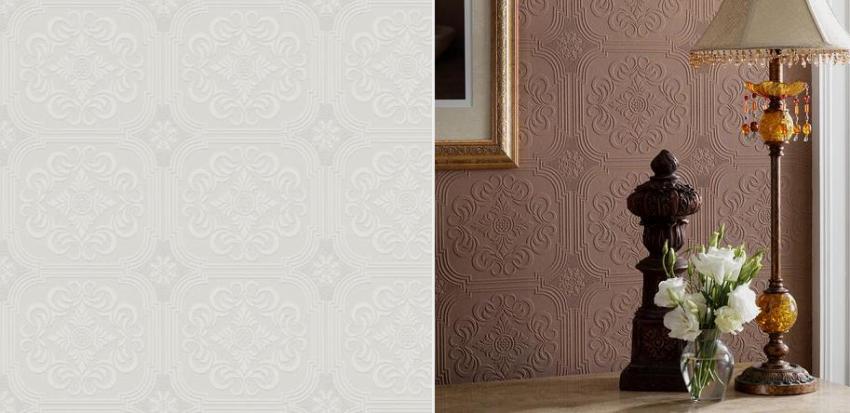
Via wallpaper for painting you can easily change the interior of the room
Important! Positive feedback from consumers about water-dispersion paints is based on the following points: the absence of a sharp toxic odor, the minimum drying time and the speed of penetration into the structure of the painted surfaces. You should pay attention to this when choosing.
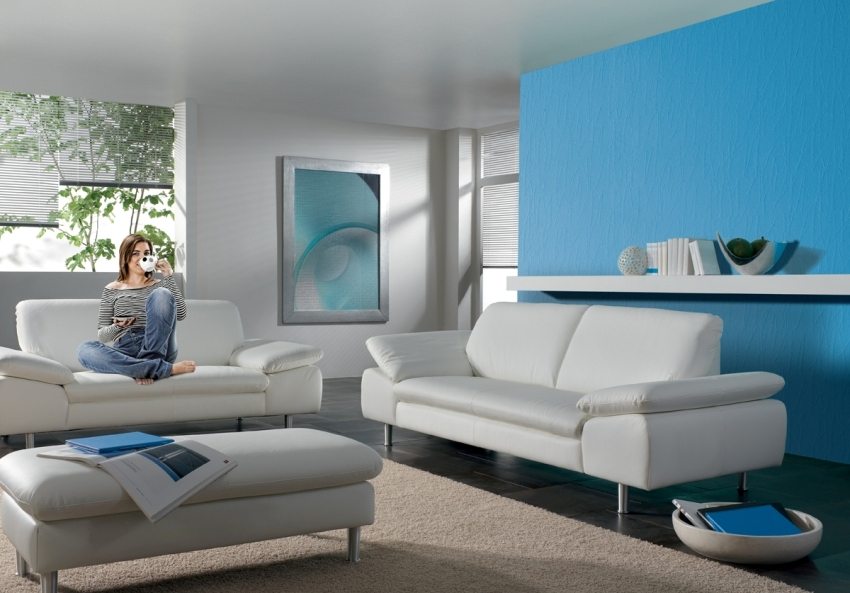
Pasted on the walls glass canvas can be repainted many times
Glass fiber for painting. Photos in the interior, beautiful solutions
Photos of various design solutions filled the media space. The abundance of textures and materials provide a huge alternative to the consumer. If a decision is made to glue the glass wallpaper for painting, then the buyer has two questions:
- The choice of the wallpaper itself. Fiberglass cobweb is most often used to decorate the ceiling. It has no texture and its final appearance in the interior depends only on the choice of paint color.Glass fiber with a pronounced embossed pattern will bring a certain feature to any room. With such a choice, it is necessary to consider their combination with the rest of the interior items.
- The choice of paint. There are conventional and original approaches to painting glass fiber wallpaper. Photos in the interior of various rooms will clearly demonstrate all the options.
When choosing a color, experts advise to pay special attention to lovers of bright, catchy shades. An unusual, balanced solution would be a combination of bright curly inserts against a background of calmer, even tones. Many photos in magazines very accurately convey the originality of this method.

Using wallpaper for painting in the decoration of the walls of the attic
As you can see, today wall decoration with glass fiber wallpaper for painting is very popular. Photos in the interior will not leave indifferent many who want to update their home. Designers advise not to be afraid of new technologies and confidently use the achievements of progress.
